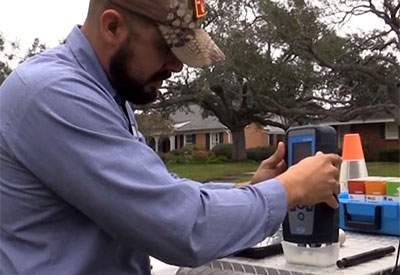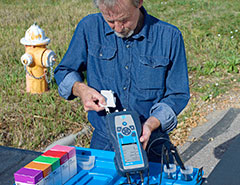Monitoring specific parameters at the Point of Entry (POE) iss a Federal regulatory requirement to ensure the delivery of safe drinking water to the community. Monitoring water quality throughout the distribution system (beyond POE) is regulated by individual States and is accepted by municipalities as a good practice to maintain safety of the system and the product – tap water.
By monitoring treated water within the water distribution system, you can identify potential problems that pose risks to public health and threaten regulatory compliance.
Hach provides the solutions to monitor these parameters. With Hach, you can ensure that safe, quality drinking water is reaching your customers.
Explore What You Need
Your facility is required to monitor water in the distribution system to ensure safe drinking water for the community you serve. Thorough monitoring can also be an early indicator of serious issues, including nitrification, main breaks, excessive water age, or potential security violations. Whatever your needs, Hach is ready to help with information, technology, and support.
Explore parameters and methods for distribution monitoring below.
Select the attributes below to find the right distribution product for you.
Hach has a range of solutions designed for water quality experts! We help take the guesswork out of measurements with accurate results and simple operation so you can continuously monitor water in your distribution system before it goes to your community.
Compare our different products used for various applications by exploring the resources and options below.





 Recurring Orders
Recurring Orders 







